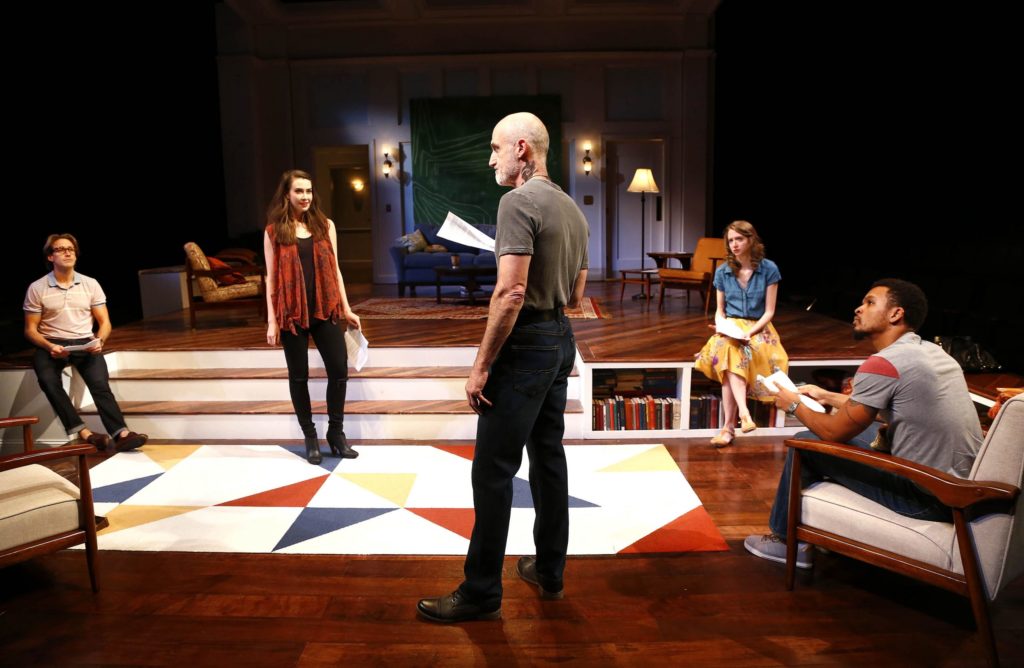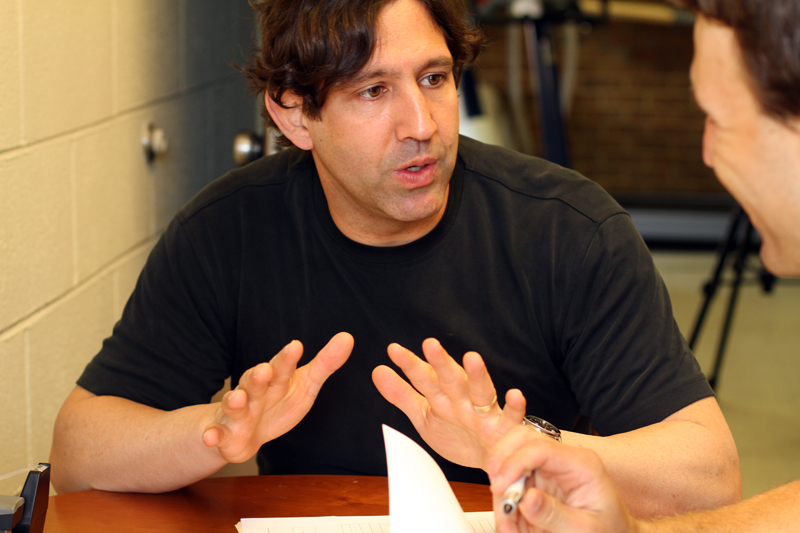New ‘Blue’ makerspace in Carmichael Residence Hall fuses entrepreneurship and the art of doing – right at students’ front doors
When UNC-Chapel Hill students want to make a physical object for a class or research project, many quickly look for places around campus where they can go to get started: a design studio, lab or makerspace. But what if they didn’t have to go anywhere? What if Carolina brought a maker environment to students right where they live?
That’s exactly what happened at the recent opening of Blue, a full-scale, 3,000-square-foot makerspace embedded on the ground floor of Carmichael Residence Hall in the heart of the Carolina campus. It’s the first space of its kind located inside a UNC residence hall and the fourth makerspace to open as part of the Be a Maker (BeAM) network since 2016.

“We have a simple goal, which is to make sure that Carolina is a place where innovators thrive,” said Judith Cone, vice chancellor for innovation, entrepreneurship and economic development. “The University wants to provide makerspaces like this because ideas come from all over campus, and we’re committed to helping people make their ideas real through the tangible process of making and doing. Whether students, faculty or staff are building a physical product, a technology or a company, we want to support them wherever they are on their journey. Our goal is to help them figure out where those concepts might go.”
Students, faculty and staff get hands-on experience trying out equipment and technology in the Blue makerspace.
Blue itself was born from a short conversation that emerged into a partnership between BeAM, Carolina Housing and the Center for Entrepreneurial Studies at the Kenan-Flagler Business School. The partnership aims to expand on the already vibrant making culture on Carolina’s campus by creating a collaborative residential community for more than 400 students living in Carmichael. Without ever leaving their dorm, students will have immediate access to physical and virtual tools that they can use to design and make physical objects for education, research, entrepreneurship and recreation.
Of course, the first building project to take place at Blue was the construction of the makerspace itself.
“We want to build things that connect you and your interests with the innovative culture that has been started and continues to thrive on this campus,” said Allan Blattner, director of housing and residential education. “This space is an amazing partnership that puts the right kind of amenity right at your fingertips.”

“I have never seen a campus enterprise take off as fast as making and this residence hall. We will fulfill our vision that every Tar Heel will take a risk, make a difference and be a maker.”
While particularly convenient for students living in Carmichael, Blue is open and available in a central campus location for all Carolina students, faculty and staff to use. And when they arrive, they’ll find a variety of resources divided across two primary areas: a making area filled with cutting-edge equipment, tools and workbenches; plus a collaborative co-working space for students or faculty. Highlights of the space include:
- A set of 24 state-of-the-art 3D printers, which is the largest collection of these printers in a single location across campus.
- An embroidery machine, which is the only such piece of equipment in the UNC makerspace network.
- A Klic-N-Kut machine that allows visitors to cut various materials, including paper and vinyl.
- A wide selection of hand tools and work benches that visitors can use to construct objects.
- Electronics prototyping equipment.
- Student-friendly evening hours: the makerspace is open from 4-10 p.m.
- A full-service kitchen that can be used by individual visitors and for pre-scheduled events.
- An entrepreneurial think-tank space where visitors can meet, study and explore ideas together.

One unique aspect of this initiative is the group of 21 students living in Carmichael as part of a residential learning community organized by the Center for Entrepreneurial Studies at the business school. This direct connection to enterprise-minded students who live in close proximity to the new makerspace will help bring entrepreneurial thinking into the Blue environment. It will also encourage students from many academic backgrounds to not only use the space itself, but to understand the strong relationship between making and entrepreneurship.
“I’m really excited about this facility because it brings making and entrepreneurship together as a fusion, and as a consequence, I think you are going to see communities formed where making and building ventures will become part of the Carolina experience,” said Ted Zoller, T.W. Lewis Clinical Professor of Strategy and Entrepreneurship and Director of the Center for Entrepreneurial Studies at the Kenan-Flagler Business School. “I look at all the dorm rooms here as an opportunity to mix communities: the entrepreneurship minor, students from the business school, the scientists, the innovators, the humanities students and the artists.”
To use the equipment in Blue or any of the BeAM makerspaces, students, faculty and staff must first attend an orientation session and then become trained on specific pieces of equipment. These trainings take place across all the campus makerspaces, and once someone becomes trained on a piece of equipment in one location, they can use the same piece of equipment in any of the BeAM spaces.

The enthusiasm around the Blue makerspace builds on the University’s efforts to ensure that making becomes a central part of the student and faculty experience. For instance, the initial BeAM strategy called for training half of the undergraduate students at Carolina by 2020. However, during the grand opening of Blue, Charlie Cummings, makerspace program manager, noted that the community of makers across campus is growing even faster than originally imagined. In fact, Cummings commented that BeAM is on pace to train 2,000 students by the end of the fall 2017 semester, shattering its initial goal by several years.
“If you take making to where they live, students will definitely be more involved,” said Cummings. “We have hundreds of students living here, and we expect that students will come downstairs in the evening and use the makerspace. Students can do their homework here, and they can do making at the same time.”
Rick Bradly, associate director of Carolina Housing agrees that convenience will play a major role in the students’ use of the space and the potential for new types of collaborations. “Carolina Housing is excited to be a part of the maker movement at UNC and to connect our residents to innovative thinking,” said Bradley. “We know that our students will value the convenience of offering this technology in such a modern facility design right where students live. I’m particularly interested in seeing what can be imagined when students from different academic disciplines bring their collective experiences together to build and create solutions for today’s global challenges.”

With the maker culture quickly building momentum at Carolina and fresh off the opening of Blue, BeAM and its network of campus partners seems poised to do much more than teach the Carolina community to make new things. It’s helping everyone at Carolina make the overall teaching and learning experience more complete.
“I have never seen a campus enterprise take off as fast as making and this residence hall,” said Rich Superfine, Taylor-Williams Distinguished Professor in the UNC Department of Physics and Astronomy, professor of applied physical sciences and faculty director of BeAM. “We will fulfill our vision that every Tar Heel will take a risk, make a difference and be a maker.”




